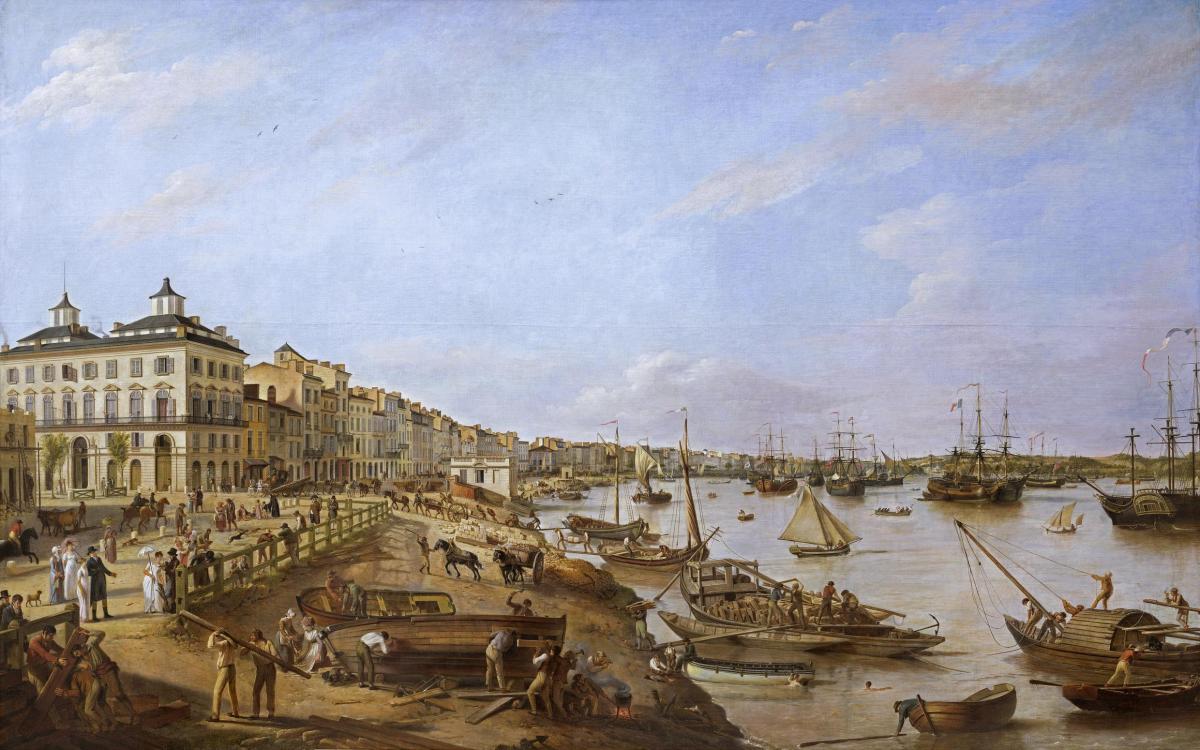Display of the 18th century collections
Lacour wing
The Musée des Beaux-Arts de Bordeaux presents a permanent exhibition devoted to 18th century European art. In order to better understand this period, which stretches from 1700 to 1815, the display has been redesigned on the basis of the works and what they tell us about mankind during the Enlightenment, its relationship to feelings, pleasure, reason and education. The 18th century is usually understood as being synonymous with elegance, frivolity and superficiality. However, paintings and sculptures reveal another side of society, no longer restricted to libertinism, but which expresses a certain seriousness, morality and high ideals.

Joshua Reynolds, Portrait de Sir William Chambers, 1750-1760© MNR 333, affecté au Musée des Beaux-Arts.
The display has been guided by the diversity of 18th century European art and is now organised into several thematic areas. Two sections are dedicated to the English and Italian schools. The first presents masterpieces of British painting (Joshua Reynolds, Thomas Lawrence, Allan Ramsay, Benjamin West, etc.), of which the museum can boast one of the most important collections in France after the Louvre. This exceptional collection has just been enriched by two paintings by James Northcote, from the Forbes collection, deposited by the Louvre. The second section exhibits some of the finest Italian paintings by Alessandro Magnasco, Giambattista Pittoni and Francesco Fontebasso.
The exhibition then moves on to six new themes, considerably increasing the number of works on display by making greater use of the height of the picture rails (65 paintings are now on display). A very large format painting by Jean-Baptiste Van Loo, Augustus Receiving the Oath from Barbarian Princes, provides an insight into the expectations of the Royal Academy of Painting and Sculpture, to which he belonged, in terms of painting. Another large-format painting by Jean Restout reminds us that history painting was essentially confined to large church commissions. A few private devotional paintings complete this section, including Portrait of an Abbot by Nicolas de Largillière and A Young Pilgrim by Alexis Grimou.
Another space is devoted to science and education. These issues were raised by the philosophers of the Enlightenment and are reflected in Marianne Loir's portrait of the Marquise du Châtelet, one of the greatest female intellectual figures of the 18th century, and in François-André Vincent's masterful Leçon de labourage (Lesson in ploughing), which illustrates one of the precepts of Rousseau's Emile (1762) on the need to teach the children of the nobility to work in the fields.

Mariane Loir, Portrait de Gabrielle Emilie Le Tonnelier de Breteuil, marquise du Châtelet.
The theme of sentiment, which is at the root of Romanticism, is exalted in Jean-Joseph Taillasson's Héro et Léandre, the expressive heads of Jean-Baptiste Greuze and the theatrical paintings of Pierre-Narcisse Guérin. The subjects of pleasure, voluptuousness and amusement, which are at the heart of the blossoming of the Rococo style, are illustrated in a series of gallant and mythological canvases which, through several episodes of the story of Venus, honour female beauty.
Finally, a section is devoted to Pierre Lacour, painter and first director of the Musée des Beaux-Arts, who occupied a central place in the artistic life of Bordeaux for forty years. Around the majestic Port of Bordeaux, portraits by his contemporaries, the painters Perronneau, Lonsing and Wertmüller, are presented, giving an insight into a refined and cosmopolitan Bordeaux society of the Enlightenment and telling the story of the birth of the museum

Pierre Lacour, Vue d'une partie du port et des quais de Bordeaux dits des Chartrons et de Bacalan (1804-1806).







